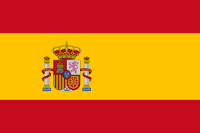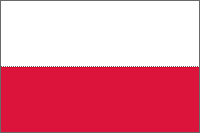How to use a render farm to render a Blender project?
Using a render farm to process a Blender project is a highly efficient approach for managing animations or scenes that are either too large or complex to be rendered swiftly on a personal computer. This method encompasses a series of important steps: setting up your Blender file, selecting an appropriate render farm, uploading your project, adjusting the render settings, overseeing the rendering operation, and downloading the completed output. Below is a detailed guide on how to effectively employ a render farm for rendering your Blender project.
Step 1: Prepare your Blender project
Preparation is crucial to ensure that your project renders correctly on a render farm.
- Consolidate assets: make sure all external assets such as textures and linked models are included in your Blender file. Use the 'File > External Data > Automatically Pack into .blend' option to package these assets into the Blender file.
- Resolve path issues: ensure that all file paths are relative, not absolute, to ensure they correctly link on the render farm's servers.
- Optimize your scene: simplify your scene to reduce rendering time, if possible. This can include reducing polygon counts, optimizing modifiers, or simplifying complex materials.
- Test renders: perform several test renders on your local machine to identify potential problems and ensure everything is set up correctly.
Step 2: Choose a render farm
Select a render farm that supports Blender and offers the specifications needed for your project.
- Compatibility: check that the render farm supports the version of Blender you’re using and any specific render engines or plugins your project requires (e.g., Cycles, Eevee).
- Cost and budget: compare costs across various render farms. Many rendering farms offer a cost calculator that allows you to calculate the price depending on the complexity of your project and the desired completion time.
- User reviews and support: look for reviews or feedback on the render farm’s reliability and customer service. Good support can be crucial if you encounter issues during the rendering process.
Step 3: Upload your project
Once your project is prepared, you need to upload it to the render farm.
- Compression: compress your Blender project file into a zip file to minimize the size of the upload.
- Secure upload: employ the secure upload methods provided by the render farm, which could include FTP, a web interface, or a specialized app.
Step 4: Configure render settings
Once your project has been uploaded, you need to set up the specific render settings on the render farm’s platform.
- Specify render engine and settings: make sure that the render settings in Blender (such as the render engine and quality settings) are accurately mirrored in the render farm’s control panel.
- Frame range and output format: determine the range of frames you intend to render and choose the appropriate output format (for example, PNG, JPEG, EXR).
Step 5: Start the rendering process
With your project uploaded and settings configured, you can start the rendering process.
- Monitoring: use the render farm’s dashboard to monitor the progress of your rendering. This can help you spot and rectify any errors early in the process.
- Adjustments: if you notice issues in the initial frames, you may need to make adjustments to your Blender file or render settings and re-upload.
Step 6: Download the rendered files
After rendering is complete, download the rendered files from the rendering farm server.
- Quality check: review the downloaded files to ensure they meet your quality standards and are free from errors.
- Backup: always backup your rendered files in multiple locations.
Using a render farm to render a Blender project can save a significant amount of time and resources, especially for high-resolution animations or complex scenes. By carefully preparing your project, choosing the right render farm, and managing the rendering process, you can achieve high-quality results.
TurboRender is an excellent decision for anyone looking to enhance their rendering capabilities. TurboRender stands out due to its high-performance rendering services that significantly reduce project turnaround times, allowing creative professionals to meet tight deadlines with ease. The platform supports a wide array of software compatibility, ensuring seamless integration into your existing workflow.
Related Posts



Render Your Artwork Online
 Easy setup
Easy setup  24/7 tech support
24/7 tech support 









